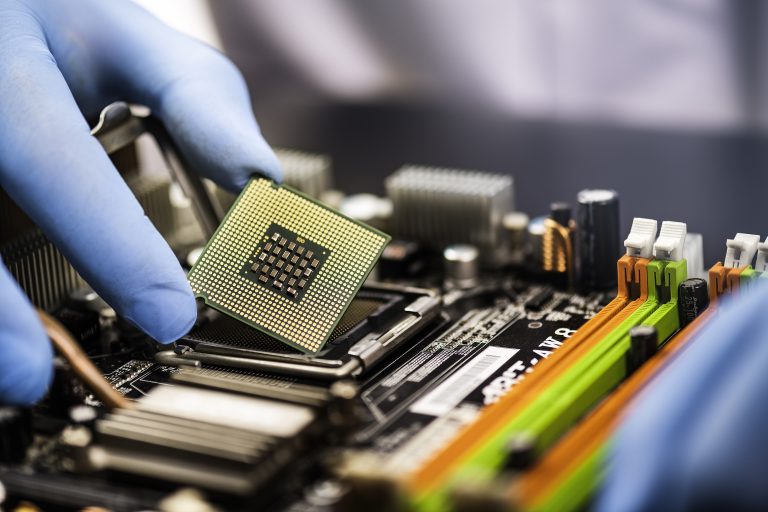In the ever-evolving world of technology, semiconductor manufacturers must constantly innovate to stay ahead. Few companies have done this as successfully and consistently as Intel. As a pioneer and global leader, Intel has shaped the semiconductor industry for decades, powering everything from personal computers and servers to next-generation AI platforms and edge computing systems. With its unmatched legacy of innovation and commitment to performance, Intel semiconductors continue to play a central role in the advancement of digital infrastructure.
A Legacy of Innovation
Founded in 1968, Intel’s journey began with memory chips and rapidly evolved into one of the most influential players in microprocessor development. Its launch of the first commercially available microprocessor—the Intel 4004—in 1971 marked a turning point in the tech industry. Since then, Intel has consistently introduced new architectures and technologies that set industry benchmarks.
One of Intel’s most enduring contributions is its x86 processor architecture, which has powered generations of personal and enterprise computing. The company’s commitment to research and development continues to yield breakthroughs in CPU performance, power efficiency, and chip fabrication technologies.
Today, Intel semiconductors are more than just CPUs. They include advanced system-on-chip (SoC) solutions, graphics processors, field-programmable gate arrays (FPGAs), and networking chips—all playing critical roles in emerging fields like AI, autonomous vehicles, and edge computing.
Cutting-Edge Manufacturing Capabilities
Intel is not just distinguishable by design innovation. It also has a vertical integration strategy. Intel, unlike many competitors who are dependent on third-party foundries, designs and manufactures its chips alone in its top-notch fabrication facilities (fabs). Therefore, the company can maintain a high level of control over the quality, performance, and supply chain reliability of its semiconductors.
Intel has been particularly successful in making the transition to advanced process nodes, including 7nm technology as well as the upcoming Intel 18A technology. The new process technology enables the increase of transistors, thus improving performance and energy efficiency. By staying true to Moore’s Law, the Intel chips maintain, and even increase, their competitive edge, in use both by consumers and in enterprise applications.
Commanding Presence in Data Center and AI Markets
Of late, Intel has made major, aggressive expansions into the very high-growth arenas of data centers, AI, and cloud infrastructure. Data center CPU market has Intel’s Xeon microprocessors as the main product, the hardware
is instrumental behind many of the largest server farms and cloud services in the world. They are being programmed for power-optimal workloads, which involve working with virtualization, high-performance computing (HPC), and machine learning.
Moreover, Intel has proactively made acquisitions, including Habana Labs and Mobileye, for the objective of reinforcing its desire in the fields of AI and autonomous vehicle technologies. The whole point is that in this way Intel’s semiconductors are being integrated not only into the standard computing systems, but also they are one of the enablers of the interconnected, intelligent devices of the future.
Backing Technologies of the Future
One of the liveliest features of Intel’s game plan at the moment is its focus on next-generation technologies. Quantum computing research aside, Intel has been the company to acquire the first neuromorphic chips that essentially mimic a human brain, which is a great step towards the future of these devices. The Gaudi2 AI accelerator and oneAPI unified programming model show the company’s commitment to the open-source and scalable future of heterogeneous computing.
Once again, through 5G infrastructure, edge computing, and Internet of Things (IoT) devices, Intel has reached beyond CPU with its semiconductor solutions. With energy-efficient chips designed for real-time processing in remote environments, Intel is a key enabler of smart cities, Industry 4.0, and next-gen wireless connectivity.
The Significance of Sourcing and Supply Chain Strength
With that global footprint expanding, Intel’s formidable supply chain and dependable sourcing techniques become a critical advantage for partners and customers alike. At a time when the semi-conductor market is facing shortages and the general supply chain is in chaos, the move to source from a company with validated manufacturing capabilities is tribal.
High-tech manufacturers seeking to have the performance-oriented, long-lasting devices will often choose Intel semiconductors for their high reliability, support ecosystem, and the best documentation. Efficacious sourcing strategies for enterprise and industrial projects mostly revolve around long-term surety, quality assurance, and compatibility. Sourcing Intel products from these credible platforms gives visibility and access to datasheets, lifecycle status, and inventory data from authorized distributors.
Enterprises intending to venture into Intel technology should, as a matter of course, deploy verified channels for Intel semiconductors. This not only helps in avoiding counterfeit risks but will ensure that correct integration support is given as well.
Final Thought
Intel indeed has left a strong mark on the semiconductor sector. From the groundbreaking of personal computing, through the revitalization of AI, 5G, and edge applications, Intel semiconductors have indeed been the main players in restructuring the current digital world. It is not only the breakthrough innovations but also the massive, high-quality manufacturing, the supply chain being solid, and the projection of what the technology of the future is going to be that make Intel an outlier.
The increasing need for intelligent, high-performance computing has led to a situation in which sourcing high-quality semiconductor solutions is now more important than ever. With their unmatched legacy and the foresight of tomorrow, Intel semiconductors remain the first choice for engineers, developers, and businesses that are creating the future.

